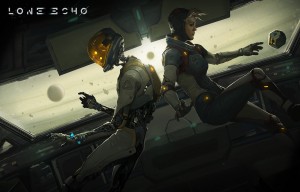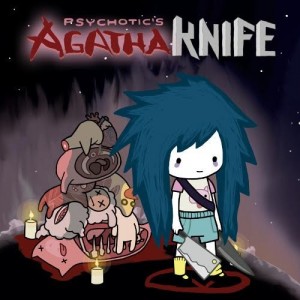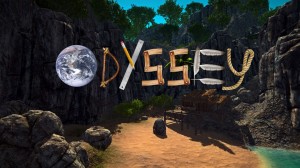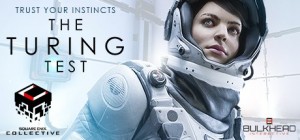Review for Lone Echo
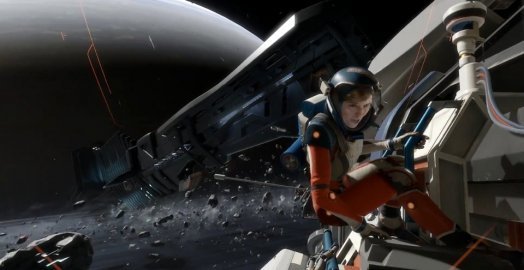
Game information
Adventure Gamers Awards
Virtual reality has forced developers to learn to walk all over again – often literally, as they rethink concepts as simple as basic movement. Over the last year and a half, we’ve watched as they’ve experimented, failed, identified problems, and side-stepped them. It’s been messy, and those early failures have amplified concerns about motion sickness and serious design limitations that could keep VR from realizing its potential. But Lone Echo, perhaps Oculus’s most ambitious title yet, manages to prove that these problems are solvable, and that VR can free players instead of keeping them in place.
Lone Echo was one of the first titles to enter development for the Oculus Touch motion controllers, and those virtual hands underpin everything you do in the game. In making touching the core mechanic, developer Ready At Dawn has built one of gaming’s most tangible worlds. Much like ADR1FT, one of the Oculus Rift’s launch titles, Lone Echo is set aboard a space station, letting players move freely, unbound by gravity. But instead of spinning around with thrusters (a mechanic that left many feeling dizzy and sick), Lone Echo lets you reach out and touch the world. Using the Oculus Touch controllers, you can grab walls, pull yourself along, and push off to float free though space. You can finesse your trajectory with wrist-mounted boosters, but even here, everything is in your hands. This simple mechanic manages to reconcile the biggest conflict facing VR design, providing both incredible freedom and a high degree of comfort.
The result is a world that extends in all directions; one that you can navigate fluidly without the need to teleport or glide around with a joystick. Your view never cuts away. You can look anywhere, and move in any direction. For the sake of keeping players comfortable, the game maintains a consistent “horizon” level so you stay “right side up,” but there are also options in the menu that allow you to roll and flip upside down, should you have the stomach for that sort of thing. The analog stick on your right hand lets you rotate in place – helpful for those who want to play seated or those with only front-facing sensors – but the most immersive way to play is standing up, so you can turn your body naturally to face wherever you want. Unlike so many other VR games that let you clip through objects by physically walking, Lone Echo will recognize a head-butt against the wall as such, and send you flying backward.
Lone Echo casts you as “Jack,” a service android aboard the Kronos II mining station orbiting Saturn. Unlike the other, more primitive Echo unit models, Jack is capable of emulating a more human-like personality, making him the de-facto companion to the station’s sole human, Captain Olivia Rhodes – an interesting role-reversal on the human-AI relationship in classic sci-fi films like Moon and 2001: A Space Odyssey. After an unexplained anomaly knocks out several of the station’s systems, Jack and Olivia scramble to repair the damage and investigate the mysterious phenomenon.
The Kronos II and surrounding sites are grounded sci-fi at its best; a detailed, believable environment where everything feels like it has a purpose. In stark contrast to Ready At Dawn’s cinematic shooter The Order: 1886, Lone Echo never takes control away from the player. There are no static cutscenes to watch, and no moments where you are glued in place and forced to watch characters talk to you. It’s a story in which you are constantly present, from the small interactions to the flashy set pieces.
You’ll interact with the world using a basic set of tools: a data scanner, a plasma cutter, and, of course, your hands. You’ll have an active list of missions, both optional and required, which largely involve figuring out why something is broken and then fixing it. These puzzles are usually pretty simple. Once you’ve identified what needs fixing, it’s usually a matter of finding a needed part, fiddling with a control panel, or using one of your tools to resolve the problem. To their credit, these scenarios are believably grounded in the game’s fiction, and feel like real work that an android like Jack might have to do. They may not be terribly challenging or clever, but they’re also seldom “gamey” or forced, either.
For a game about a robot in space, I was often surprised by just how human the story could be. Jack’s relationship with Captain Rhodes is at the heart of this tale, and it’s clear that Ready At Dawn has put in a tremendous amount of effort to ensure players bond with her. You can ask her questions about items you find and banter back and forth with multiple dialog choices that let you personalize your interactions, even if they don’t seem to impact the story. Some very impressive animation and endearing voice acting help to make Olivia really feel alive, perhaps the first character I’ve seen in VR that truly manages to bridge the uncanny valley. As the story progressed, I cared about her, and I believed that she cared about Jack.
Working your way through your list of tasks will keep the story moving forward, but you’ll have the freedom to explore and go at your own pace. Missions can often be tackled in any order, and some are entirely optional. Collectible “cube satellites” reward players for off-roading with audio logs that provide additional backstory details, but the environments themselves are rewarding to see all on their own, littered with items and objects to inspect. The production values on display here are beyond anything we’ve seen in a VR-exclusive game before, and something not often found in an adventure game of any kind.
While the world feels substantial and there’s a ton of detail, this isn’t an especially lengthy adventure. A casual stroll through the game (including some optional objectives, but not all) took me about six hours – above average for a VR game, but falling short of titles like Obduction or Wilson’s Heart. In that time, it manages to tell a complete story arc that builds to a terrific emotional crescendo, but it also blatantly sets up a sequel, which makes the ending feel more abrupt and less satisfying than it ought to.
Lone Echo has left me wanting more, but not just because of the loose ends left in the story. In the days since finishing the game, I can’t seem to shake it – like a memory I keep turning to whenever my mind wanders. Immersive mechanics; an intimate, character-driven story; and a detailed, believable world all come together to create an experience I could genuinely lose myself in. Hopefully we won’t have to wait for a sequel before another game gets VR this right.
Note: This review covers only the single-player adventure game. The title also includes a multi-player sports-themed game, Echo Arena.




